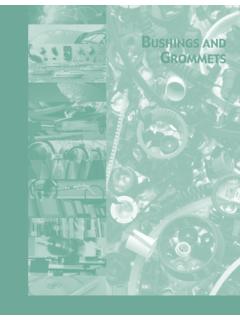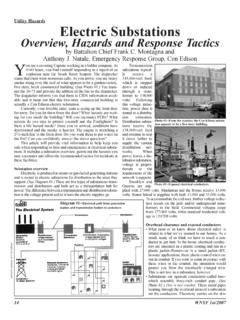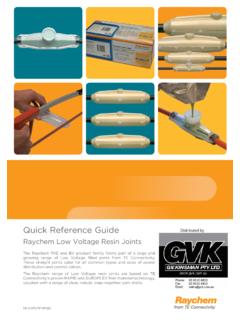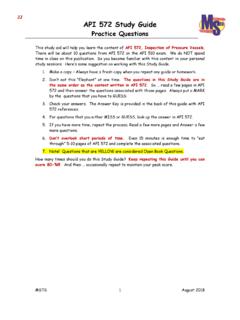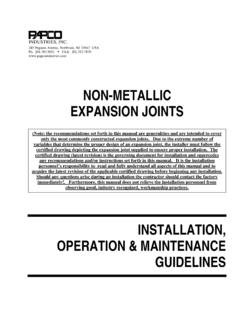Transcription of Insider s Guide to Home Inspections
1 Insider s Guide to Home Inspections buying a house built in the 1950 s Pr e s e nt e d b y The Real Estate Inspection Co. 2012 - 2016 1 The Real Estate Inspection Co. 2012-2016 2 Table of Contents Introduction .. 4 Electrical 4 Heating Systems .. 6 Plumbing .. 7 Insulation .. 8 Roof .. 9 Windows .. 10 Safety Glass .. 10 Structure .. 11 What should you do? .. 11 The Real Estate Inspection Co. 2012 - 2016 3 The Real Estate Inspection Co. 2012-2016 4 buying a house built in the 1950 s One of the most common questions we receive is What issues should I be aware of when buying a house built in the 1950 s?
2 This is a great question and brings up the fact that all homes are not the same. Just like a vehicle, technologies evolve over time. The construction methods and safety items are continuously improving. Older homes may have components that are, well, old. Introduction This publication is not intended t o dissuade you from purchasing an older home! They certainly have a certain charm that is not present in today s houses. However, your expectations should match the reality of buying an older house . If you are considering buying a house that was built more than 50 or 60 years ago, there are some things you must consider so that you are not disappointed once you move in.
3 We ve inspected lots of these houses only to find that the buyers are surprised at the findings in the inspection report. Your home inspector should identify certain components of the house even if they are functioning properly. They may be old, consist of old technology, or may not be sufficient for today's modern families. These components include electric service panels, ungrounded circuits, furnaces, insulation, windows, etc. Electrical System Prior to the 1950 s the only appliances in most homes were a gas range and maybe a gas furnace. Electricity was primarily used for lighting which is why there were so few receptacles installed in those houses.
4 It was adequate for a few lamps. It was in the 1950 s when electricity really became a staple component in a home. Better Living Through Electricity brought electric appliances to center stage. For the first time The Real Estate Inspection Co. 2012 - 2016 5 electric appliances were introduced in mass quantities. They were marketed heavily by the manufacturers and the electric utility companies. Clothes washers, televisions, electric ovens, percolators, - even electric clocks (no more winding) - were all promoted heavily to make life better . Many people also felt that electricity was a safer option that gas due to a concern for fires.
5 The old electrical systems had to be upgraded to supply enough electricity to operate all these new machines safely. Old electric systems often had only a few circuits. After all, they only needed to supply enough power for the afore-mentioned lights. Bigger appliances draw enough power to require a dedicated circuit that is not shared with the lighting circuit. The biggest risk with drawing too much current through a wire is that it will over-heat and cause a fire. Fuses were the original safety feature which prevented house fires due to over-heated wires. They contain a thin wire inside that is designed to break if too much current is demanded on a circuit.
6 This prevents the wire inside the wall from over-heating. From today s perspective, older electric panels can be under-sized meaning that they were designed to provide enough electricity for a house in the 1950 s. The main service panel may only be rated at 60 AMP s. Back then the average kitchen had only a few countertop appliances consisting of a toaster, a percolator and maybe an electric can opener. When touring an older house you may only see one receptacle at the kitchen counter. Those electric systems were modern for the time. They were not designed for all the appliances we use today such as microwave ovens, heavy duty mixers, toaster ovens, etc.
7 Today houses can have 5 TV s, several computers, cable boxes, stereos, hair dryers, game consoles, ceiling fans, air conditioning, hot tubs, pools you get the idea. An electric panel that provides less than 100 AMP's may not provide enough electricity for your family. If the electrical system of the house has not been upgraded, it simply may not provide enough electricity for the modern family. Make sure your home inspector reports on the type of main panel (fuses or circuit breakers) and on the capacity. If it is less than 100 AMP s, you will likely want to upgrade the electric panel which can cost a couple thousand dollars or more.
8 An old electrical system will also not have the safety features of a modern system. Primarily, the system may not be grounded like a modern system. If you see two-prong receptacles the system is probably not grounded adequately. Proper grounding improves safety and without it you may have problems with sensitive electronic equipment. Again, if you have two-prong receptacles you may need to budget for an upgrade of the electrical system. The Real Estate Inspection Co. 2012-2016 6 Another very important upgrade to an electrical system is the installation of GFCI receptacles. GFCI stands for Ground Fault Circuit Interrupter.
9 These devices monitor the flow of electricity and if they detect a difference in the supply and return of electricity, or a possible flow of electricity to ground, they will shut off the power. For example, if you touch a bad cord and a plumbing fixture, electricity will flow through you to the plumbing fixture an electrocution hazard. A GFCI can protect you from this hazard. They are now required within 6 feet of a plumbing fixture, in garages, and at the exterior of a home. Although the seller is not required to install GFCI s it is a good idea to install them for safety. You can read more about when and where GFCI receptacles are required on our website at and search GFCI.
10 There have been many other technological improvements to electrical systems. Too many to list here, but the idea is that an old house may need an electrical upgrade. Heating Systems Due to the moderate climate in San Diego, we often see original furnaces in old houses. They may still be functional, but these old units are inefficient, noisy and they do not have the safety features of a new unit. Using our old car analogy, older models just don t have the safety features or efficiency of a newer model. Some of the features that are now standard safety items include over-heat protection and panel cover shut off switches to protect against fire and Carbon Monoxide hazards.

